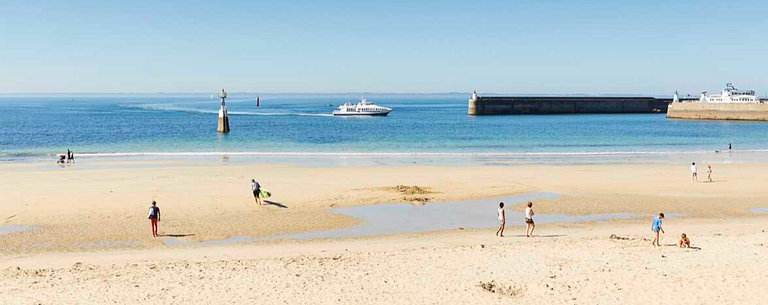Hugo Simberg
View of the beach at Quiberon, Brittany
Signed H. Simberg and dated 1910. Original frame. Panel 37.5 x 45.5 cm.
Alkuperä - Provenienssi
Gunnar Lundén-Welden (1914-1988), Stockholm, Sweden;
gifted by him in October 1958 to Josef Enqvist (1897-1969) and his wife Elsa (1886-1964), Västerhaninge, Sweden;
Thence by descent until 2022
Näyttelyt
(Probably) "Hugo Simberg", Riddarhuset (House of Nobility), Helsinki, Room of the Nights, 8-20 February 1911, No. 26.
Muut tiedot
At the beginning of 1907 Simberg accepted a teaching post at the Drawing School at the Finnish Art Society in Helsinki. He there met the young Anni Bremer (1883-1969), a student at the school, whom he married early in January 1910. Soon after their wedding the couple travelled to Paris via The Netherlands and Belgium for a combined honeymoon and art pilgrimage. They arrived in Paris towards the end of January where they initially stayed in a hotel, eventually renting a studio on Rue Caulaincourt in Montparnasse, where they installed a piano for the musically gifted Anni. In March Simberg wrote that they had settled in and were enjoying Paris.
During his stay in Paris, Simberg, a key figure of the symbolist movement, was influenced by the neo-impressionists, embracing their brighter palettes and freer brushwork. Together with the Finnish artist Werner Åström, who lived in Paris at the time, he regularly visited Académie Ranson, situated in Montparnasse, founded by Paul Ranson, which following his untimely death in 1909 was run by his widow. Courses were held by Paul Sérusier, Theodore Roussel and Félix Valloton. Pierre Bonnard, Édouard Vuillard, Maurice Denis and Albert Marquet often visited the academy in order to assess the students work.
Between about 25 June to 25 July, Hugo and Anni Simberg spent a month in Brittany in the department of Morbihan. They first stayed in Quiberon, then in the fishing village Le Palais on the nearby island Belle-Ile-en-Mer. In Brittany Simberg painted some of his best works in his newly assimilated style. The present previously unpublished picture, painted plein air, is a prime example of his newly evolved style. A characteristic of the picture is its pure vibrant coloring and broad brushstrokes partly applied in a pointillistic manner. In order to increase its sense of depth, Simberg has made use of the seaweed on the shore by employing a zigzag pattern which leads the eye from the foreground into the horizon. The seaweed also bears witness of the high tide in Brittany.
In stark contrast to the benign and tranquil villages of Le Palais and Quiberon, the latter with its cabanas on the beach, the surrounding landscapes around the two villages is altogether of a different character and is marked by high cliffs without access to the sea level. In a letter to his father, Nicolai Edvard Simberg (1822–1915), dated 21 July, Hugo Simberg described the wild, rugged and inhospitable area of Morbihan:
"Hotellet är av mycket anspråkslösa dimensioner och inte en buske växer här. Endast de väldigaste klippor störta brant i havet som oavbrutet svallar häromkring. Det är den mest vilda och ödsliga trakt jag sett, ett oändligt hav och jättelika, branta fantastiska klippor med de märkvärdigaste grottbildningar som kan tänka sig. / Här finns mycket av intresse att måla och jag skall begagna mig av tillfället så mycket jag hinner, ty den 25 Juli tänker vi avresa till Paris.” (The hotel is of very modest dimensions and not a single bush grows here. Only the most enormous rocks plunge steeply into the sea that is constantly surging around here. It is the wildest and most desolate area I have ever seen, an endless sea and huge, steep, fantastic cliffs with the most remarkable cave formations imaginable. / Here there is much of interest to paint. I shall use the opportunity as much as I can, for on July 25th we intend to leave for Paris.)
In the end Simberg seems to have abandoned the idea of painting the barren landscape surrounding Belle-Ile-en-Mer and Quiberon that he found so fascinating. Amongst his known pictures from his stay in Brittany, there is not one known that depicts this characteristic landscape. He did, however, take a number of photographs of it, including a photograph of his wife standing on the cliffs facing the vast expanse of the sea.






















































































